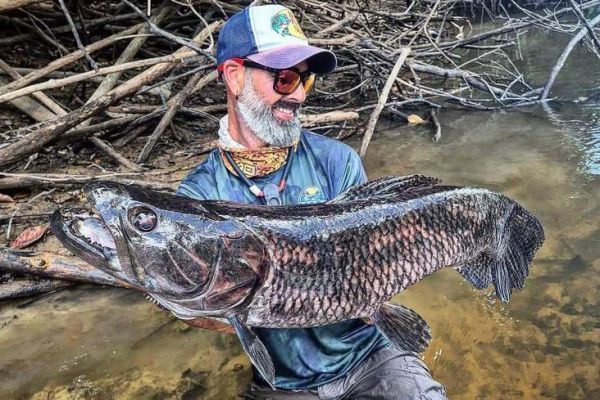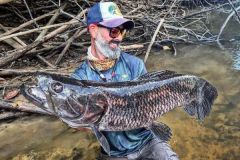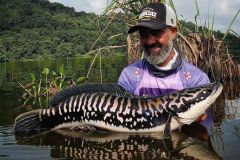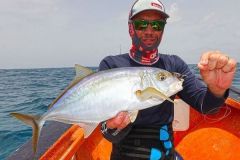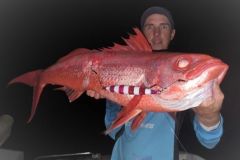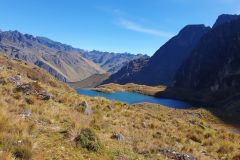Fishing factors and conditions
In the vast environment of the Amazon, rain plays a decisive role. So, even if it doesn't rain much in your area, a heavy downpour 20 km upstream can cause a rapid rise in water levels (over a metre overnight), and a major clouding of the water that can have a considerable impact on fishing. This affects the behavior of forage fish and therefore predators. While low water levels logically tend to concentrate fish, a sudden rise in water levels will disperse them, forcing them to find areas sheltered from the currents. The end of the dry season is therefore the best time for this type of adventure (September to December). These days, however, it's hard to predict the weather.
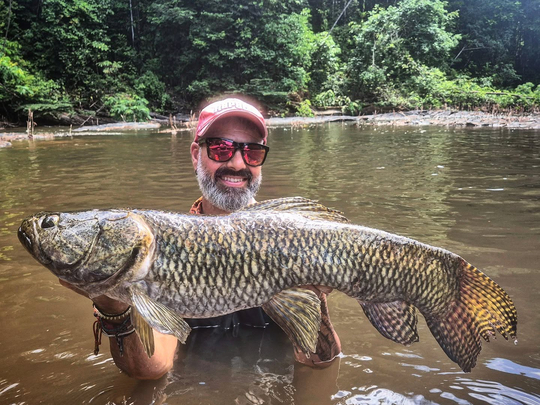
The moon is also an important factor. The aimara is above all a nocturnal predator.
This explains why the most prolific times (though not the absolute truth, far from it) are at the end of the day, when the moon begins to set, and early morning, at the end of the feeding phase. A full moon implies more intense nocturnal activity. This is especially true for large fish, but is not true for the majority of fish who will bite at any time of day, provided the lure is close by.
Another interesting fact is the stomach contents of the fish. In fact, if you embark on this expedition, you'll have no choice but to eat a few aïmaras. Grilled, smoked or blaffed, it's a delicious fish. A 4 kg fish can generally feed six people without worry. Preparing them is an opportunity to see what they eat, and to learn a little more about their eating habits. And then there's the surprise. Almost 100% of the fish have empty stomachs, and not for lack of prey. This raises the question: do fish feed mainly on very small prey, like yayas, the small white fish that are present in huge numbers? Do they have particularly rapid digestion? These questions remain unanswered, but it's interesting to note.
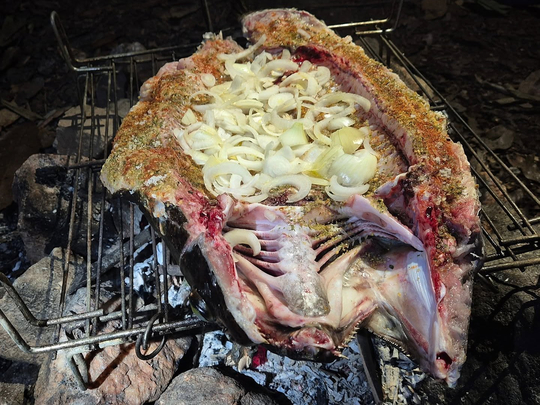
Pure power fishing
Most of the fishing is done from kayaks, on long drifts. The idea is to sand. Every indentation in the banks, every submerged trunk, every undertow can harbour a fish. While certain positions may seem obvious, you mustn't neglect open-water fishing. In fact, these fish love to post up on drop-offs, behind a rock that breaks the current. So don't hesitate to break the rhythm and change lure to explore a well-marked area, even for just a few casts, before resuming your drift. Sometimes, you'll get a frenzied string of hits on any type of lure, but other times, the conditions and configuration will force you to take a different tack. The magic lures of the previous day are no more than relics, and you have to find something else: fish deeper, faster, with more vibration, with a particular color.
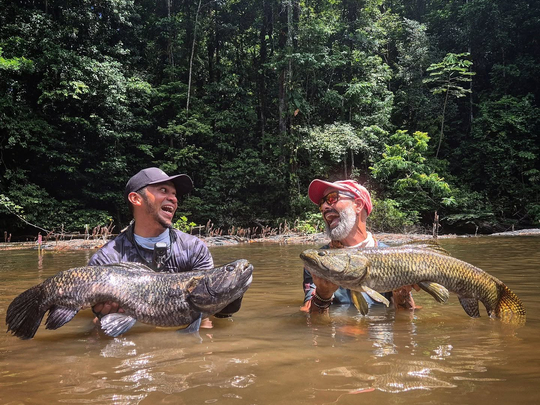
On the jumps, the fishing is different. There are several on this route, such as Saut Equerre, Saut du Péril, Saut Deux-Roros... These spots can be fished on foot. The trick is to identify areas of counter-current, boulders likely to harbour fish lying in ambush, waiting for food to pass within their immediate reach before popping up. These areas can be very prolific, especially when the water level rises. Fish then gather at the bottom of the jump and attempt to swim upstream to gain access to upstream areas, either to find more food, or to spawn (in March). The fish then swim upstream, in the same way as the trout, and it's not uncommon to see the backs of fish sticking out of the water in micro-pools. The spot then empties rapidly, as the water recedes.
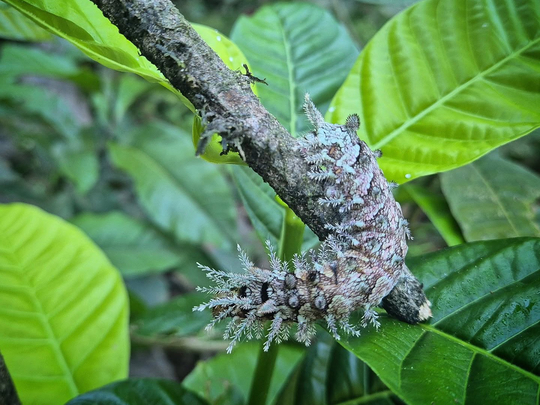
Aïmara in combat
Aimara's oversized tail and serpentine body give it very interesting fighting skills. However, if the attack is sudden, speed is not its strong point. Instead, it will probe and use the current to find an obstacle in which to shelter. And then, sensing that this isn't working, a veritable aerial ballet ensues, where each candle is an opportunity for him to take off on a whim. So he doesn't hesitate, he shakes hard. The fisherman, at the other end, can only try to anticipate the jumps and endure, praying for the best. And of course, that's often when the lure ends up being ejected.
The aimara has an extremely hard mouth into which it is very difficult to stick a hook. If it's not set deep, you'll just have to hope it stings in the cheeks or at the corner of the mouth. Otherwise, it's a sure-fire win for the fish.
However, as luck sometimes plays in our favour, the stripping rate should be around 3/5 on fish weighing 4 kg or more, which still leaves a few good opportunities to put the super predator on the dry.

 /
/ 


